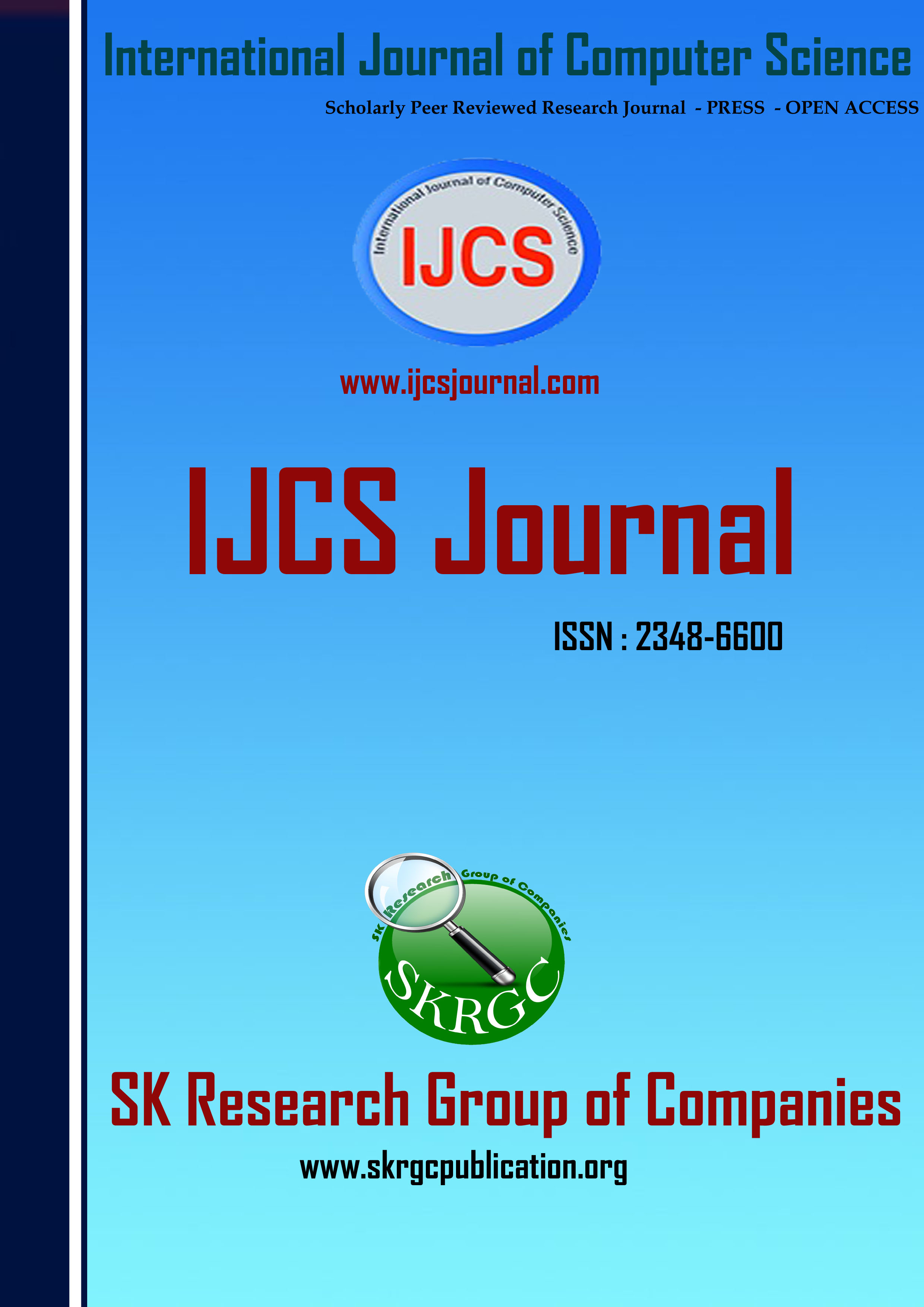An Efficient and Secure Way for Key Distribution Using Attribute Based Multiple Keywords Subset Search Method
International Journal of Computer Science (IJCS) Published by SK Research Group of Companies (SKRGC)
Download this PDF format
Abstract
A collusion implies a contract between at least two gatherings. In some cases illicit and in this way cryptic, to restrain open rivalry by beguiling, deceiving, or duping others of their lawful rights. In this research, a secure data sharing scheme, which can achieve secure key distribution and data sharing for dynamic group. A safe route for key dissemination with no safe correspondence channels, and the clients can safely get their private keys from assemble administrator. At that point, plan can accomplish fine-grained get to control, any client in the gathering can utilize the source in the cloud and renounce clients can't get to the cloud again after they are repudiated. A proposed escrow free traceable attribute based multiple keywords subset search system with verifiable outsourced decryption approach can protect from the collusion attack, which means that revoked users cannot get the original data file even if they conspire with the untrusted cloud. By utilizing access control polynomial, it is configuration to accomplish efficient get to control for dynamic gatherings. Give a security investigation to demonstrate the security of our plan. The results show that fine-grained access control technology can ensure data privacy in mobile cloud and reduce the overhead on user’s side in mobile cloud.
References
[1] Weimo Liuy, Saravanan Thirumuruganathan, Nan Zhangy, “Aggregate Estimation over Dynamic Hidden Web Databases”, vol 7 IEEE Year: Sep 2014.
[2] Weimo Liu1, Saar Bin Suhaim1, Saravanan Thirumuruganathan, “HDB Tracker: Monitoring the Aggregates on Dynamic Hidden Web Databases”, 2nd Conference Year: Sep 2014.
[3] Mansurul Bhuiyan, Synthesis Mukhopadhyay, “Interactive Pattern Mining on Hidden Data: A Sampling-based Solution”, IEEE Year: Nov 2012.
[4] C. Sheng, N. Zhang, Y. Tao, and X. Jin, “Optimal algorithms for crawling a hidden database in the web”, Proc. VLDB Endowment, vol. 5, no. 11, pp. 1112–1123, 2012.
[5] Mohammed Al-Kata and Bunge Suk Lee, “Load Shedding for Temporal Queries over Data Streams”, IEEE Year: Nov 2011.
[6] Raven kumar MCA, Mohamed Faseel.VK, “Aggregate Estimation in Hidden Databases with Checkbox Interfaces”, IEEE 29th Conference on Computational Complexity Year: Apr 2016.
[7] S.Nandagopal1, S.Jegadeesan, “Enhance Estimation in Hidden Databases Using Cache Memory with Left Deep Tree”, IEEE Year: March 2016.
[8] Md Farhadur Rahmanz, Saravanan Thirumuruganathan, “Aggregate Estimations over Location Based Services”, IET conference Year: Sep, 2015.
[9] Fan Wang, Gaga Agrawal, “Effective and Efficient Sampling Methods for Deep Web Aggregation Queries”, IEEE 21th Conference on Computational Year: March 2011.
[10] M. Benedikt, G. Gottlob, and P. Senellart, “Determining relevance of accesses at runtime”,? in Proc. 30th ACM SIGMOD-SIGACT- SIGART Symp. Principles Database Syst., 2011, pp. 211–222.
[11] L. Barbosa and J. Freire, “Siphoning hidden-web data through keyword-based interfaces”, JIDM, 1(1):133–144, 2010.
[12] N. Afrati a, Paraskos’s V. Lekeas b, 1, Chen Li c, “Adaptive-sampling algorithms for answering aggregation Queries on Web sites”, IEEE Year: Sep 2007.
[13] Jiying Wang, Ji-Rong, “Wen Instance-based Schema Matching for Web Databases by Domain-specific Query Probing” , International conference Year: 2004.
[14] B. Henry and K. Chang, “Statistical schema matching across web query interfaces. In SIGMOD”, VOL 6, 2003.
[15] E. Agichtein, P. G. Ipeirotis, and L. Gravano, “Modeling query-based access to text databases. In WebDB”, conference 2003.
[16] N. Bruno, L. Gravano, and A. Marian, “Evaluating top-k queries over web-accessible databases”, In ICDE, 2002.
[17] J. Callan and M. Connell, “Query-based sampling of text databases. ACM TOIS”, 19(2):97–130, 2001.
[18] A. Dasgupta, X. Jin, B. Jewell, N. Zhang, and G. Das, “Unbiased estimation of size and other aggregates over hidden web databases”,? in Proc. Int. Conf.Manage. Data, 2010, pp. 855–866.
[19] M. Benedikt, P. Bourhis, and C. Ley, “Querying schemas with access restrictions,? Proc. VLDB Endowment”, vol. 5, no. 7,pp. 634–645, 2012
[20] R. Khare, Y. An, and I.-Y. Song, ?Understanding deep web search interfaces: A survey,? ACM SIGMOD Rec., vol. 39, no. 1, pp. 33– 40, 2010.
[21] A. Dasgupta, X. Jin, B. Jewell, N. Zhang, and G. Das, “Unbiased estimation of size and other aggregates over hidden web databases”, In SIGMOD, pages 855–866, 2010.
[22] Beeri, C., S. Naqvi, R. Ramakrishnan,Shmueli, S. Tsur, “Sets and Negation in a Logic Database Language”, Proc. 6th ACM SIGMOD-SIGACT Symposium on Principles of Database Systems, 1987.
[23] Bancilhon, F., D, Maier, Y. Sagiv and Ullman, Magic Sets and other Strange Ways to Implements Logic Programs, Proc. S-th ACM SIGMOD-SIGACT Symposium on Principles of Database Systems, pp. 1-16, 1986.
[24] Bancilhon, F., and R. Ramakrishan, An Amateur’s Introduction to Recursive Query Processing Strategies, Proc. 1986 ACM-SIGMOD Intl. Conf. on Mgt. of Data, pp. 16-52, 1986.
[25] Krishnamurthy, R., Boral, H., Zaniolo, C. Optimization of Non recursive Queries, Proc. of 12th VLDB, Kyoto, Japan, 1986.
[26] Ait-Kaci, H. and R. Nasr, “Residuation: a Paradigm for Integrating Logic and Func- tional Programming,” submitted for publication 1986.
Keywords
Multiple keywords subset search system, Key distribution, Security

